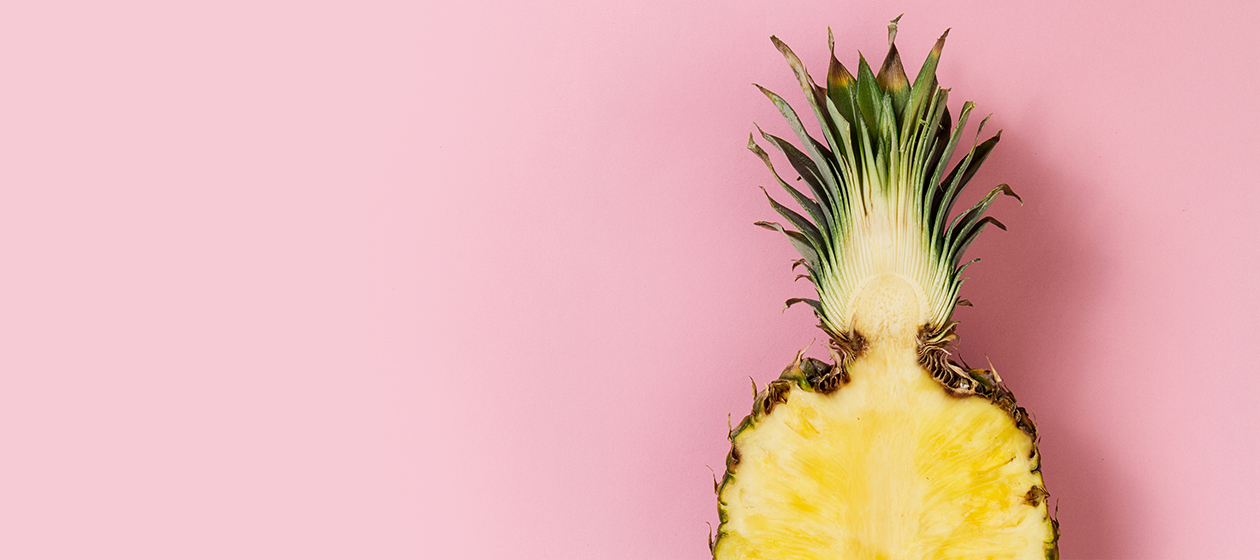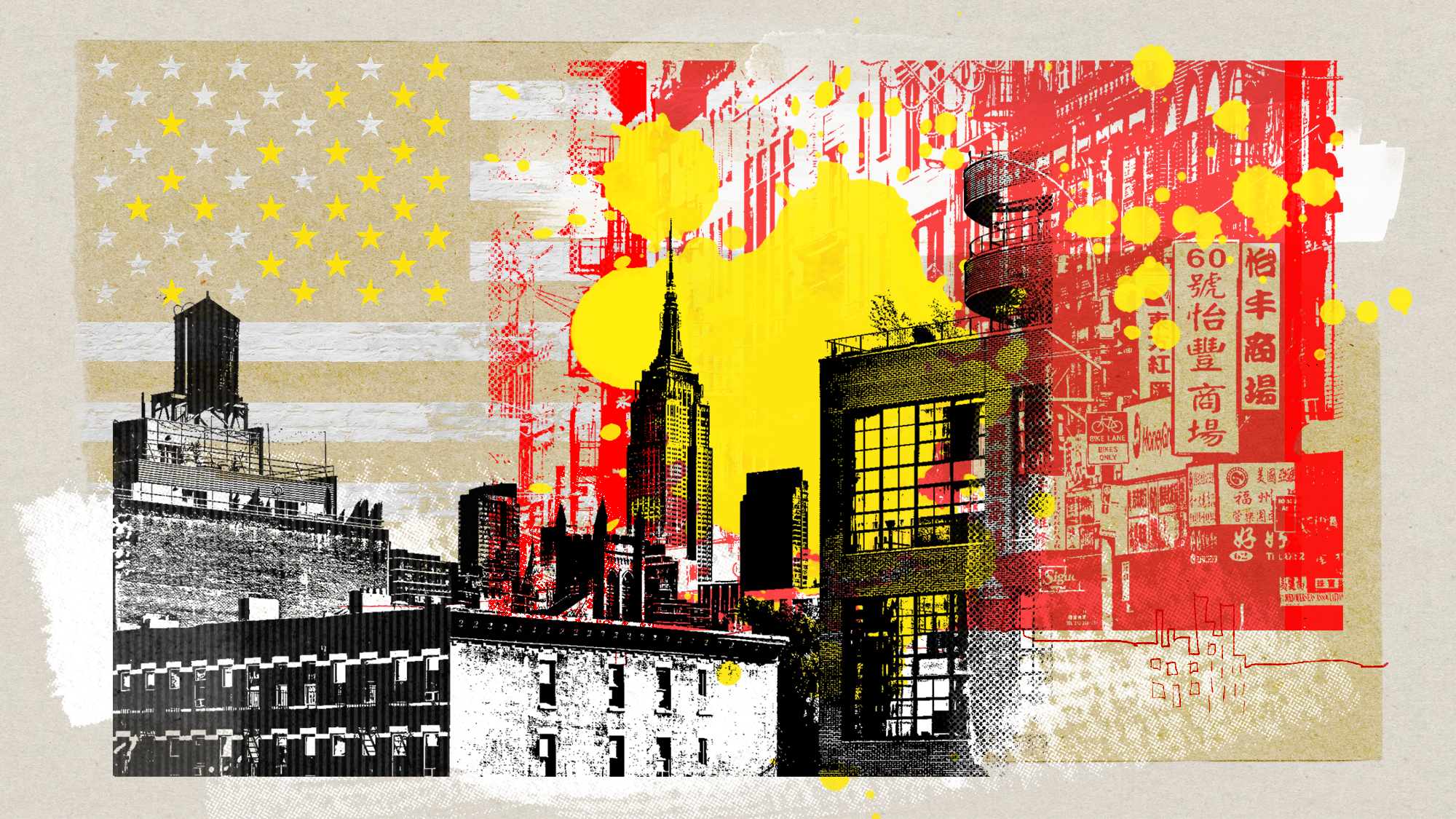How pineapples became a status symbol
When Christopher Columbus brought the first pineapple to Europe, the spiky, exotic fruit created a sensation. Soon, kings and aristocrats were co-opting 'King-Pine' for their own purposes.

"There is no nobler fruit in the universe," Jean de Léry writes of the pineapple. Charles Lamb loved the fruit erotically: "Pleasure bordering on pain, from the fierceness and insanity of her relish, like a lover's kisses she biteth." Pieter de la Court professes: "One can never be tire'd with looking on it." How did these men, and so many others, become so enraptured with the pineapple? And how have we forgotten its former grandeur?
In 1496, when Christopher Columbus was returning from his second voyage to the Americas, he brought back a consignment of pineapples. Little did he know that this golden gift, nestled among the tame parrots, tomatoes, tobacco, and pumpkins, would be the crowning glory of his cargo.
The fateful pineapple that reached Spanish King Ferdinand II of Aragon was the sole survivor: It was the only specimen that had not dissolved into a sticky rot during the journey. It produced enough of an impression for Peter Martyr, tutor to the Spanish princes, to record the first tasting: "The most invincible King Ferdinand relates that he has eaten another fruit brought from those countries. It is like a pinenut in form and color, covered with scales, and firmer than a melon. Its flavor excels all other fruits."
The Week
Escape your echo chamber. Get the facts behind the news, plus analysis from multiple perspectives.

Sign up for The Week's Free Newsletters
From our morning news briefing to a weekly Good News Newsletter, get the best of The Week delivered directly to your inbox.
From our morning news briefing to a weekly Good News Newsletter, get the best of The Week delivered directly to your inbox.
At least part of the excitement came from the fruit's spiked form, which sent Europeans into rapture. Ferdinand's envoy to Panama, Gonzalo Fernández de Oviedo y Valdes, writes, "[It is] the most beautiful of any fruits I have seen. I do not suppose there is in the whole world any other of so exquisite and lovely appearance."
The sweetness of the pineapple, too, should not go unmentioned. Renaissance Europe was a world essentially bereft of common sweets. Sugar refined from cane was an expensive commodity, and orchard grown fruits were subject to seasons. The pineapple may well have been the tastiest thing anyone had ever eaten. But delicious or otherwise, it was still the preserve of adventurers, and the pineapple might never have made it into common lore if it hadn't coincided with yet another global development: the widespread dissemination of the written word.
Though books had been in production since the mid 15th century, the 16th century saw an estimated increase of 130 million books flood Western Europe. Sailors and scholars alike took up the pen to chronicle tales from the New World, its civilizations, climate, flora, and fauna. Suddenly, wider knowledge of the pineapple led people to notice its glaring absence in the Bible and classical texts.
As Fran Beauman notes in her book The Pineapple, "That it was previously unknown in the Old World meant that it was free of the cultural resonances that engulfed other fruits." While the pomegranate suffered under the legacy of Persephone and the apple was stained by the Creation story, the pineapple was, Beauman continues, "a completely blank page" onto which ruling powers could press their own meanings.
A free daily email with the biggest news stories of the day – and the best features from TheWeek.com
It did not take long for the absolutist monarchy, still unshaken on the Continent, to coopt the pineapple for its own purposes. The French priest Father Du Tertre may have been the first to bless it "the king of fruits," but by the mid 17th century, this imperial image was exceedingly popular. The French physician Pierre Pomet's exalting explanation runs, "It was thought a just Appellation ... to call the Ananas the King of Fruits, because it is much the finest and best of all that are upon the Face of the Earth. It is for this Reason that the King of Kings has plac'd a Crown upon the Head of it, which is an essential mark of its Royalty."
The pineapple became a symbolic manifestation of the divine right of kings. Not only did it suit Royalist agendas to claim anything with a crown had been appointed by heaven, but the distance the pineapple had to travel to get to Europe meant few people had seen or tried one. This added an extra mythical quality that could not be contested.
The situation in England, however, was set to change. During the sparing Cromwellian years that followed the English Civil War of 1642, there are no mentions of the pineapple in print. To the staunchly Protestant Oliver Cromwell, "the pineapple must have seemed like an insufferable luxury compared, with, say, the humble pear," Beauman writes. Besides, Cromwell was not willing to embrace a fruit whose leafy headgear was read as evidence of God's favor. In England, torn by issues of governance, the pineapple was briefly the enemy.
Then Charles II was recalled to take the throne in 1660, and a new era of plenty was ushered in. Nicknamed the Merry Monarch, Charles II was celebrated for his voluble personality, swaggering court of cavaliers, and rapacious love of women. Cromwellian Puritanism was cast aside in favor of the revival, and splendor returned to the dining table with glistening meats, trembling jellies, and sugar sculptures. In the pineapple, which Charles II christened "King-Pine," he saw an opportunity.
In 1668, when the French ambassador came to England to mediate a heated debate over the island of St. Kitts in the West Indies, Charles II ordered a pineapple from Barbados, then an English colony, to be perched at the top of a pyramid of fruit at dinner. It was a wily move to assert English ascendancy in the region, and a public relations triumph. "We can get pineapples," it seemed to relay, "and you can't." From then on, the pineapple became Charles II's favorite status symbol. He even had a painting commissioned of himself being presented a pineapple by the royal gardener, though this was another bit of clever PR: The pineapple still could not be grown in northern climes.
As European kingdoms tussled for power in the colonies, and particularly as the Dutch gained ground, England's access to pineapples would continue to be leveraged as proof of its strength. Unluckily for the British, the Dutch were also keen and able gardeners. The first greenhouse was constructed in the Netherlands in 1682, intensifying the rivalry between the two nations. When the Dutch cloth merchant Pieter de la Court had a breakthrough in the process of growing pineapples, the English were galled into a jealous frenzy. This only subsided when a former English princess and her Dutch husband, ironically named William of Orange, took the throne. William's new title as king of England did much to calm the pineapple wars.
By the Georgian era, pineapples could be raised on the British Isles. Cue countrywide madness. As the Enlightenment period made the rich richer, the landed aristocracy began to engage in a frenzy of new hobbies, including gambling, boozing, and time-consuming, expensive pineapple cultivation.
Pineries needed care around the clock, custom-built greenhouses, and mountains of coal to keep the temperatures high. The fruit took three to four years to bloom. The cost of rearing each one was equivalent to $8,000 in today's money. The sheer expense meant it was considered wasteful to eat them, and they remained, as during Charles II's reign, dinnertime ornaments. A pineapple would be passed from party to party until it began to rot, and the maids who transported the pineapples placed themselves in mortal danger should they be accosted by thieves.
For those who did not have the funds to grow their own, a bevy of pineapple-rental shops sprang up. By the 1770s, it had entered the lexicon as a commendation. "A pineapple of the finest flavor" was a phrase used for anything that was the best of the best. (For instance: "My birthday party was a pineapple of the finest flavor.") In Sheridan's 1775 play The Rivals, a character compliments another by pronouncing, "He is the very pineapple of politeness."
During the expansion of trade in 18th-century Britain, home-goods companies began to cash in on the pineapple as a status symbol. Wedgwood, makers of fine china, began to produce tableware with pineapple themes for the upper classes. Carved-stone pineapples appeared on plinths outside grand manor houses, pronouncing to passersby the largesse and high standing of the family within. They adorned carriages, topped garden temples, figured in countless paintings, and were turned into enormous sculptures gracing country gardens. Pineapples had become synonymous with good taste, nobility, and limitless wealth.
It was a primarily English phenomenon. Pineapples disappeared from France after the 1789 Revolution, and other countries such as Spain, Portugal, and even Russia (where a pineapple had once made it to the court of Catherine the Great) could not keep up with the U.K.'s heavy investment in pineapple cultivation.
As steamships began to import the fruit in greater quantities from the colonies, the pineapple's reputation deteriorated. Industrialization, war, and shortages served to push the fruit further from cultural consciousness. It seems strange now that this fruit, easily purchased in chunks at any supermarket, ever engendered such furor.
Yet in the past few years, the world (or at least the world of those who shop at Urban Outfitters) has witnessed a return of the pineapple motif. Its bristly shape appears on clutch bags, in the form of novelty shot glasses, stuck on cute stationary and phone cases. After the advent of cheap canned pineapple rings and pineapple chunks atop Hawaiian pizzas, it seems difficult to believe that this most recent embrace of the pineapple's whimsical form has anything to do with status.
Trends in hipster decorating motifs — from owls to pineapples and, more recently, cacti to flamingos — follow little discernible logic. The website Trend Bible pins the emergence of the pineapple as connected to the 2016 Summer Olympics in Brazil and a subsequent growing interest in South America, though the "King-Pine" appeared on wallpaper and statement socks as early as 2014.
Perhaps the memory of when people had never seen anything so spiky or tasted anything so sweet lingers in our collective subconscious. At the very least, the modern love of the pineapple feeds into people's constant yearning for summer, for faraway tropical lands. A life of heat and pleasure. A life of leisure, in fact, just like aristocrats once had.
Originally published in The Paris Review. Reprinted with permission.
-
 A TikTok trend has Gen Z men leaving streetwear behind for more preppy attire
A TikTok trend has Gen Z men leaving streetwear behind for more preppy attireThe Explainer More than a zipper: Young Black men embrace the ‘quarter-zip movement‘
-
 Codeword: December 12, 2025
Codeword: December 12, 2025The daily codeword puzzle from The Week
-
 Sudoku medium: December 12, 2025
Sudoku medium: December 12, 2025The daily medium sudoku puzzle from The Week
-
 Femicide: Italy’s newest crime
Femicide: Italy’s newest crimeThe Explainer Landmark law to criminalise murder of a woman as an ‘act of hatred’ or ‘subjugation’ but critics say Italy is still deeply patriarchal
-
 Brazil’s Bolsonaro behind bars after appeals run out
Brazil’s Bolsonaro behind bars after appeals run outSpeed Read He will serve 27 years in prison
-
 Americans traveling abroad face renewed criticism in the Trump era
Americans traveling abroad face renewed criticism in the Trump eraThe Explainer Some of Trump’s behavior has Americans being questioned
-
 Nigeria confused by Trump invasion threat
Nigeria confused by Trump invasion threatSpeed Read Trump has claimed the country is persecuting Christians
-
 Sanae Takaichi: Japan’s Iron Lady set to be the country’s first woman prime minister
Sanae Takaichi: Japan’s Iron Lady set to be the country’s first woman prime ministerIn the Spotlight Takaichi is a member of Japan’s conservative, nationalist Liberal Democratic Party
-
 Russia is ‘helping China’ prepare for an invasion of Taiwan
Russia is ‘helping China’ prepare for an invasion of TaiwanIn the Spotlight Russia is reportedly allowing China access to military training
-
 Interpol arrests hundreds in Africa-wide sextortion crackdown
Interpol arrests hundreds in Africa-wide sextortion crackdownIN THE SPOTLIGHT A series of stings disrupts major cybercrime operations as law enforcement estimates millions in losses from schemes designed to prey on lonely users
-
 China is silently expanding its influence in American cities
China is silently expanding its influence in American citiesUnder the Radar New York City and San Francisco, among others, have reportedly been targeted